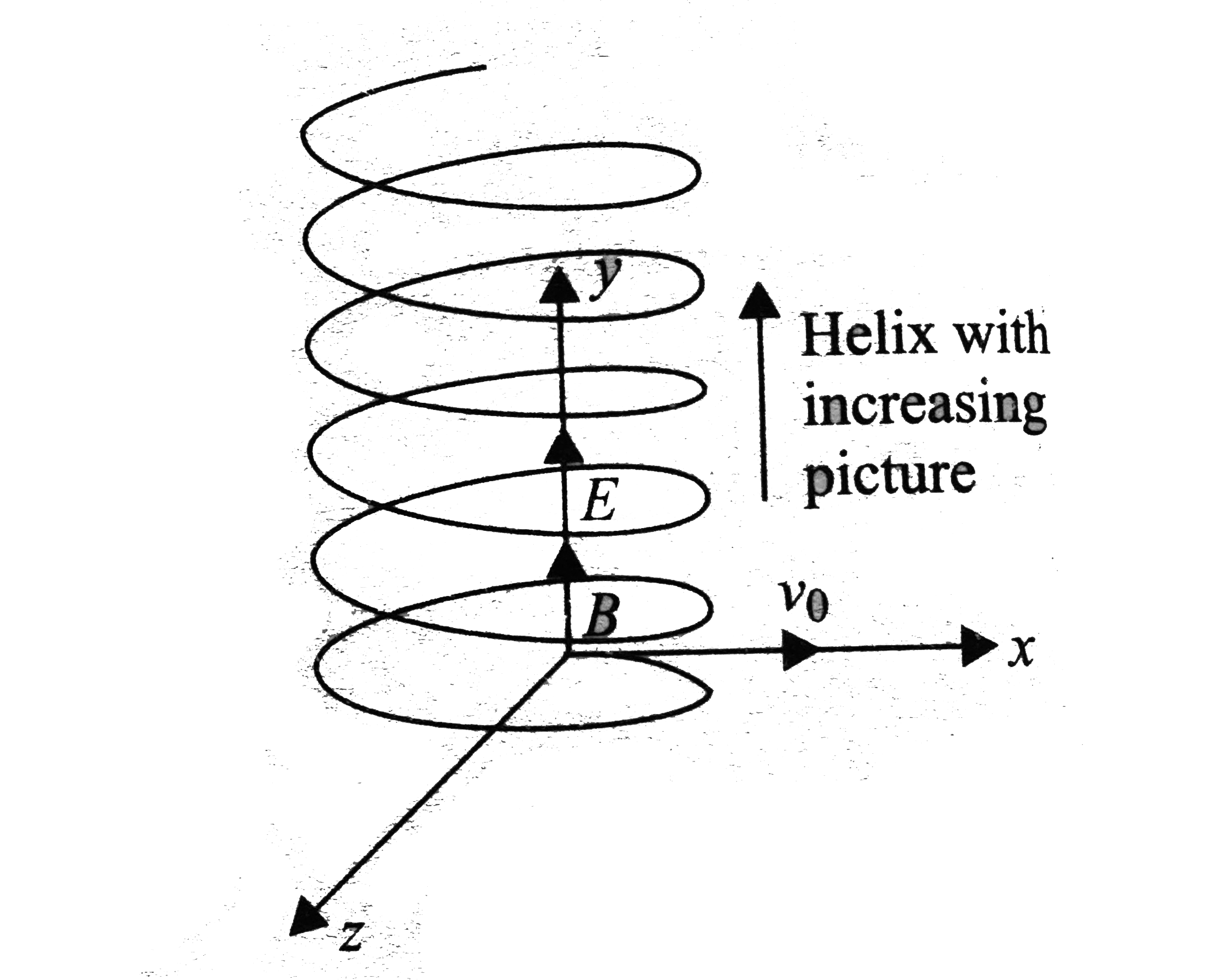A charged particle moves along a circle of radius r = 100 mm in a uniform magnetic field with induction B = 10.0 mT. Find its velocity and period of revolution if that particle is a a non-relativistic proton; b a relativistic electron.
a For motion along a circle the magnetic force acted on the particle will provide the centripetal force necessary for its circular motion.i.e. and the period of revolution
Related Solutions
A charged particle moves along a circle of radius in a unifrom magnetic field with induction . Find its velocity and perios of revolution if that particle is
(a) a non-relativistic proton,
(b) a relativistic electron.
View SolutionUp to what values of kinetic energy does the period of revolution of an electron and a proton in a uniform magnetic field exceed that at non-relativistic velocities by
View Solutiona proton and a alpha - Particles enter a uniform magnetic field with uniform velocity alpha The period of revolution of the particle will be that of the period of revolution of the proton:
View SolutionA non-relativistic charged particle files through the electric field of a cyclindrical capacitor and gets into a unifrom transverse magnetic field with induction B (fig). In the capacitor the particle moves along the are of a circle, in the magnetic field, along a semi-circle of radius r . The potential differnce applied to the capacitor is equal to V , the radii of the electrodes are equal to a and b , with a lt b . Find the velocity of the particle and its specific charge q//m .
View SolutionA relativistic particle with charge and rest mass , moves along a circle of readius in a uniform magnetic field of induction . Find:
(a) the modulus of the particl's momentum vector,
(b) the kinetic energy of the particle,
(c) the acceleartion of the particle.
View SolutionA non-relativistic point charge q moves with a constant velocity v . Using the field transformation formula. Find the magnetic induction B produced by this charge at the point whose position relative to the charge is determind by the radius vector r .
View SolutionUnder the influence of a uniform magnetic field, a charged particle moves with constant speed v in a circle of radius r. The time period of revolution of the particle
View Solutiona proton and a alpha Particles enter perpendicular to uniform magnetic field with the same velocity. alpha The period of revolution of the particle will be that of the period of revolution of the proton.
View SolutionFind the radiation power developed by a non-relativistic particle with charge and mass , moving along a circular orbit of radius in the field of a stationary point charge .
View SolutionA charged particle of mass m is moving with a speed u in a circle of radius r. If the magnetic field induction at the centre is B, the charge on the particle is
View SolutionA charged particle of mass m is moving with a speed u in a circle of radius r. If the magnetic field induction at the centre is B, the charge on the particle is
View SolutionUnder the effect of uniform magnetic field, a charged particle is moving in a circle of radius R with constant speed v. The period of motion is
View Solution(A) : Magnetism is relativistic.
(R) : When we move along with the charge so that there is no motion of charge relative to us we find no magnetic field associated with the charge.
View Solution(A) : Magnetism is relativistic.
(R) : When we move along with the charge so that there is no motion of charge relative to us we find no magnetic field associated with the charge.
View SolutionA charged particle is moving on circular path with velocity v in a uniform magnetic field B, if the velocity of the charged particle is doubled and strength of magnetic field is halved, then radius becomes
View SolutionA charged particle is moving on circular path with velocityv in a uniform magnetic field B, if the velocity of the charged particle is doubled and strength of magnetic field is halved, then radius becomes
View SolutionA non-relativistic enegry particle moves in a transverse uniform magnetic fiel with induction . Find the time dependence of the particles's kinetic enegry diminshing due to radiation. How soon will its kinetic enegry decrease e-fold? Calculate this time interval for the case (a) of an electron, (b) of a proton.
View SolutionA charged particle (+q) enters into a uniform magnetic field region of induction B and desribes a circle. The kinetic energy of the charged particle is
View SolutionUniform electric and magnetic fields with strength E and induction B, respectively, are along y-axis as shown in Fig. A particle with specific charge leaves the origin O in the direcction of x-axis with an initial non-relativistic velocity

The coordinate of the particle when it crosses the y-axis for the time is
View SolutionUniform electric and magnetic fields with strength E and induction B, respectively, are along y-axis as shown in Fig. A particle with specific charge leaves the origin O in the direcction of x-axis with an initial non-relativistic velocity

The coordinate y_nn^(th) time is
View Solution